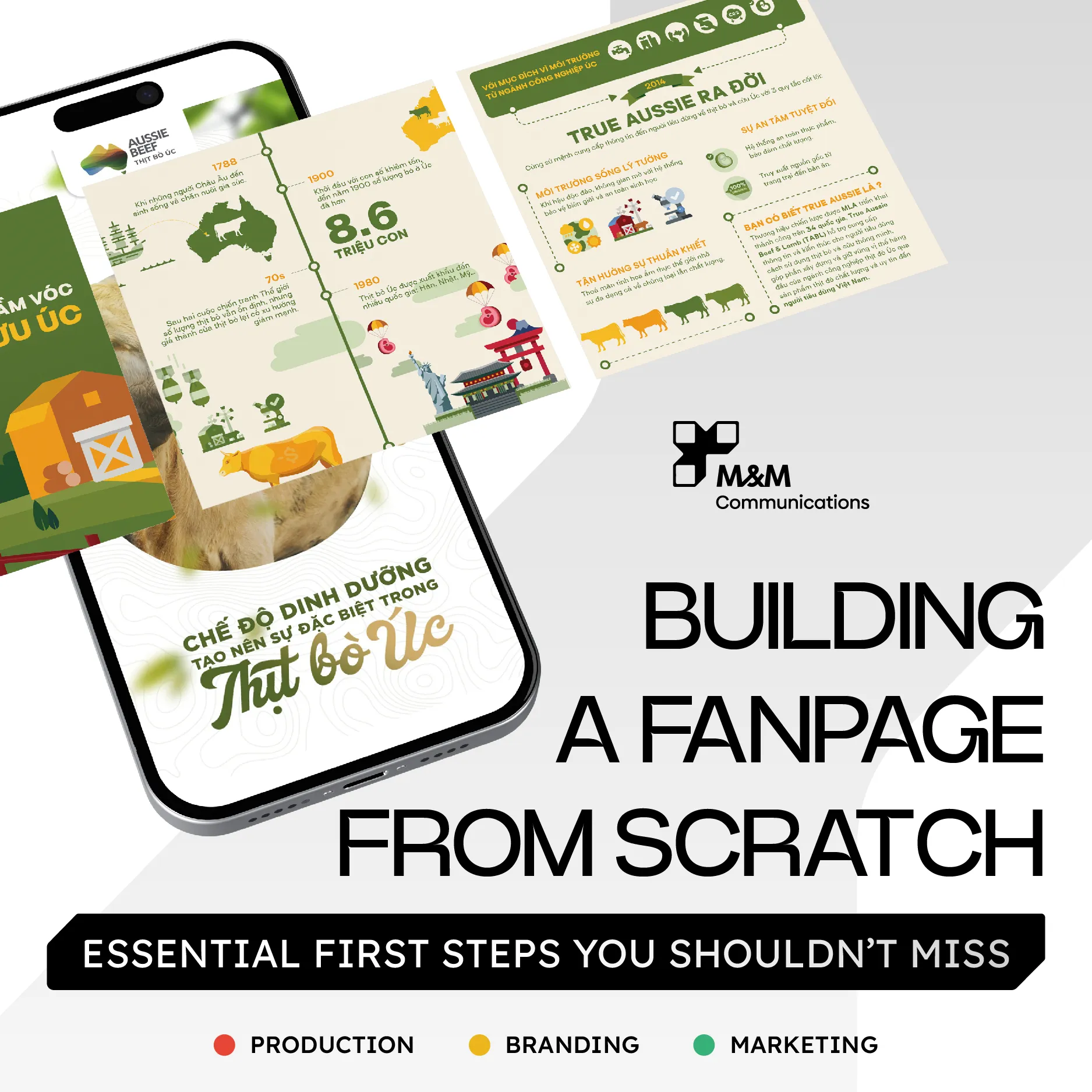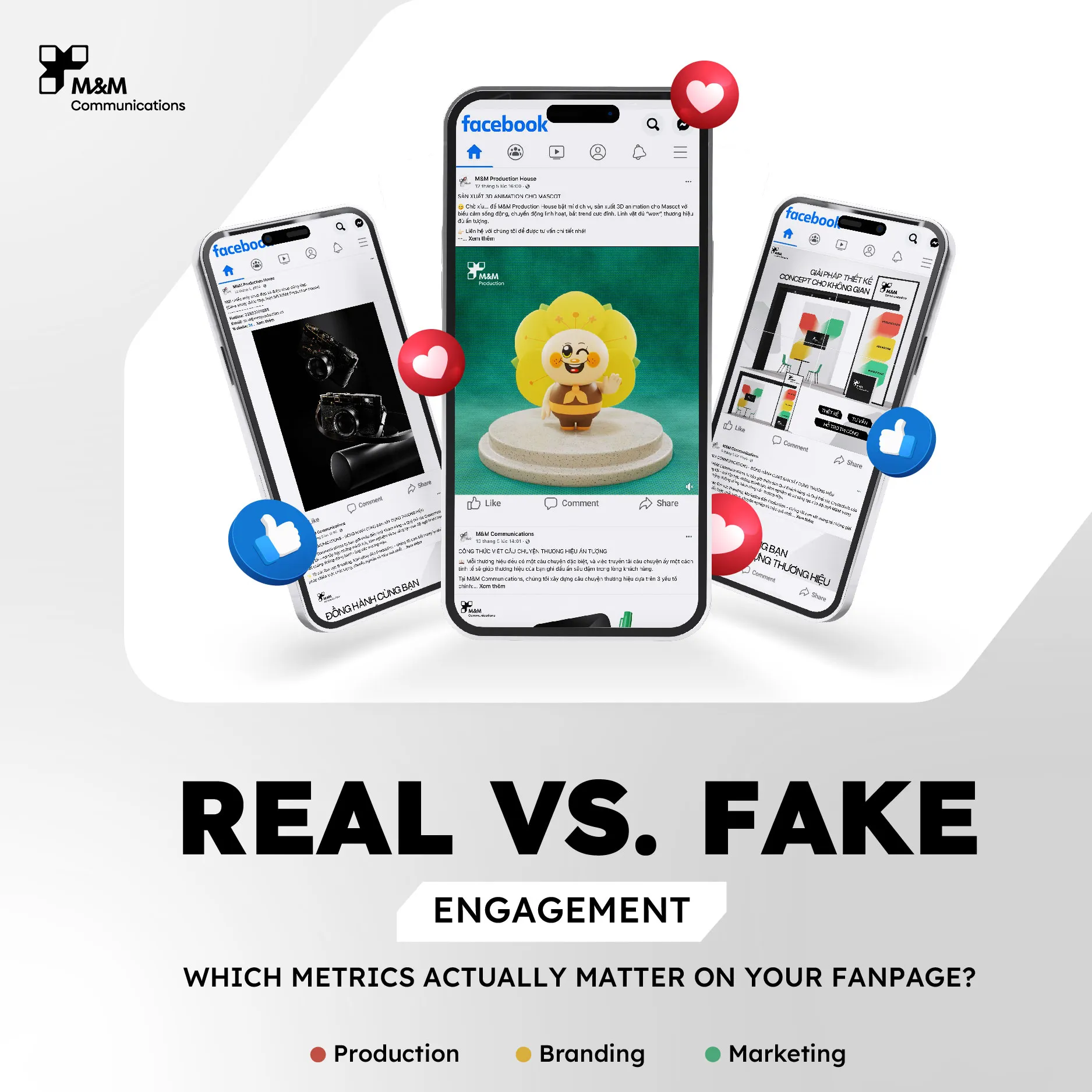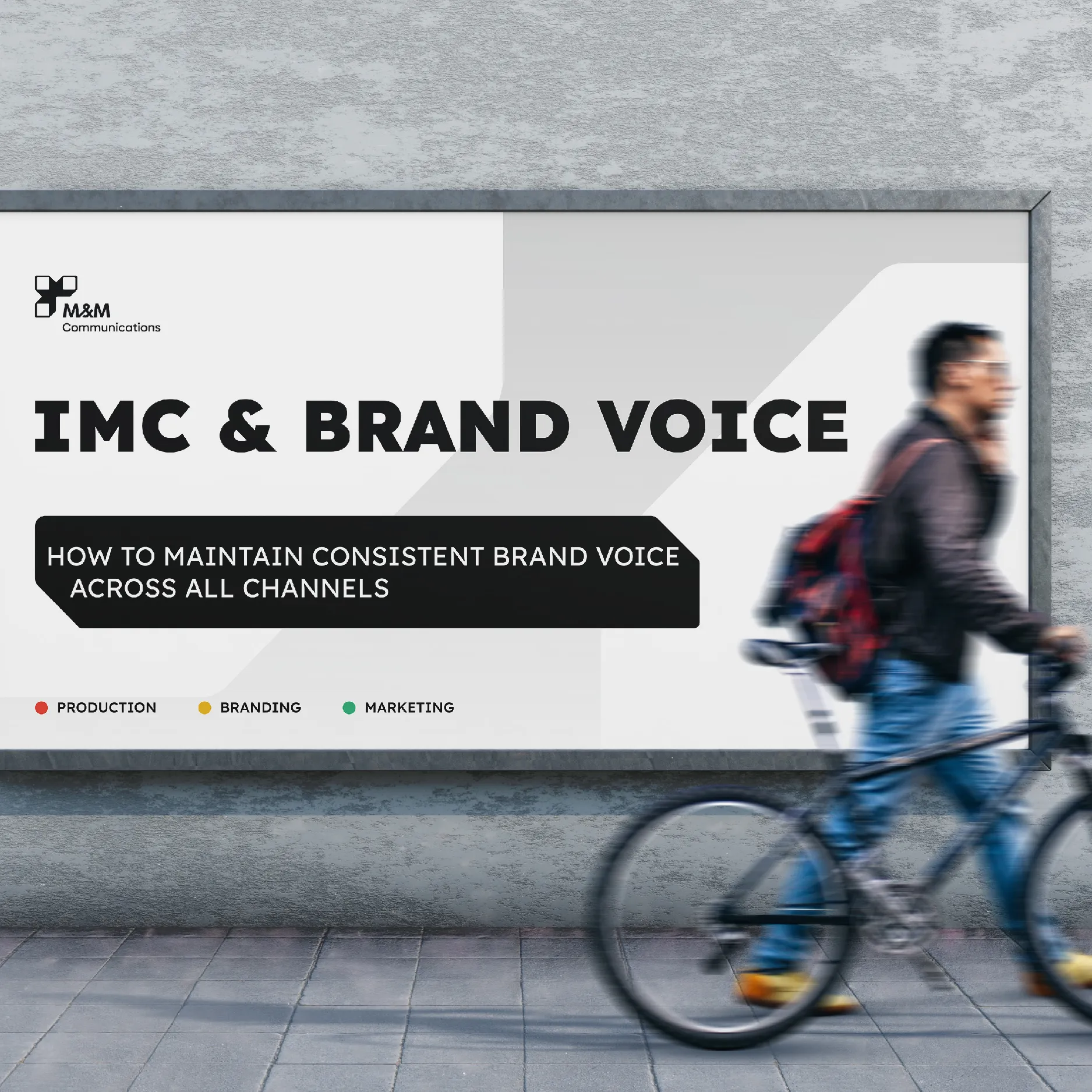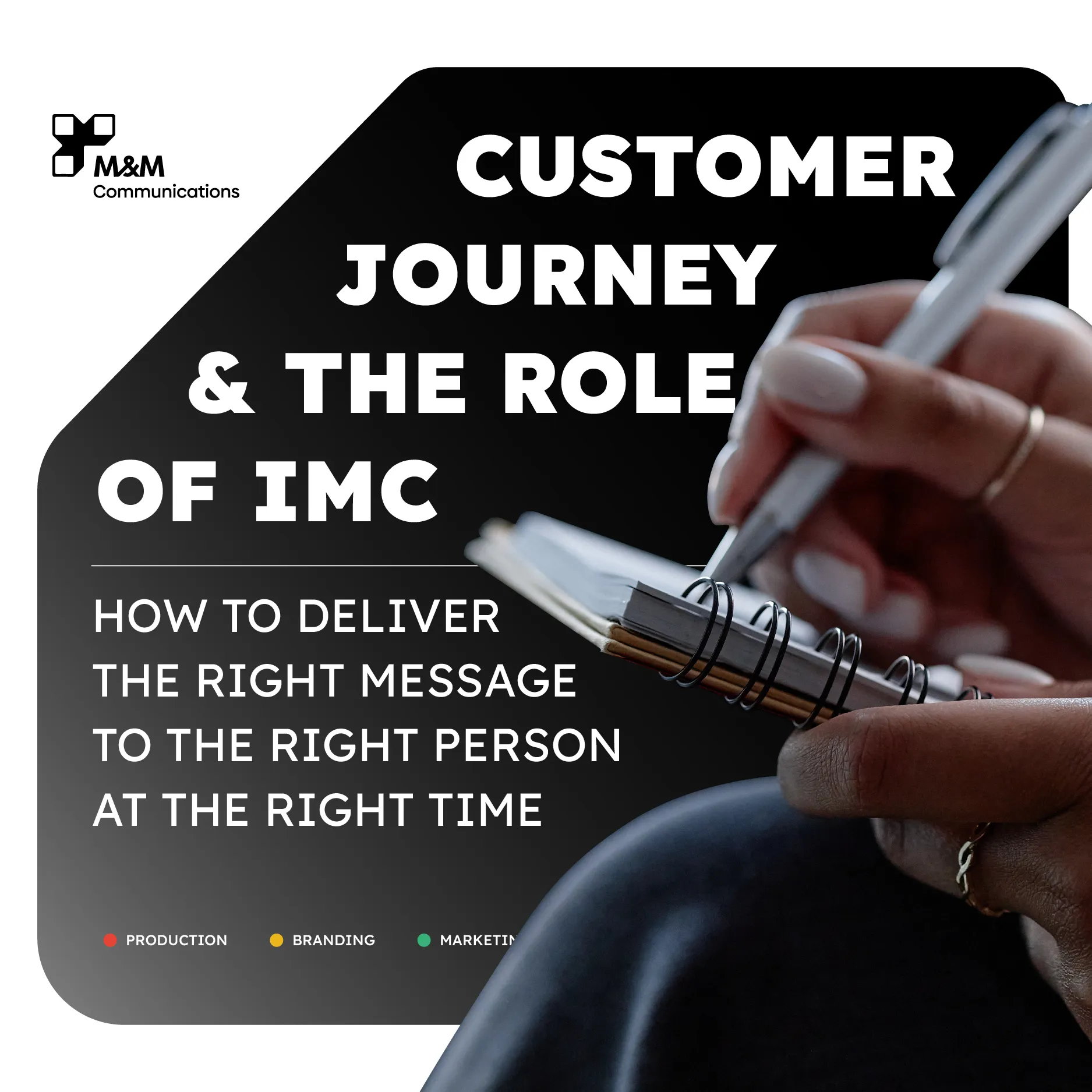
CUSTOMER JOURNEY AND THE ROLE OF IMC: HOW TO DELIVER THE RIGHT MESSAGE TO THE RIGHT PERSON AT THE RIGHT TIME
In the digital age, consumers no longer follow a straight path from “see – like – buy.” Instead, they go through a complex process full of touchpoints—from awareness and consideration to decision-making and even post-purchase experiences. This is the Customer Journey, a multi-stage process that helps brands understand what their customers need, when and where they need it.
To deliver the right message, to the right person, at the right time, businesses need a strategic tool: IMC – Integrated Marketing Communications. Let’s explore with M&M Communications how IMC works hand-in-hand with the Customer Journey to create a seamless and more effective brand experience.
1. What is the Customer Journey, and why does it matter?
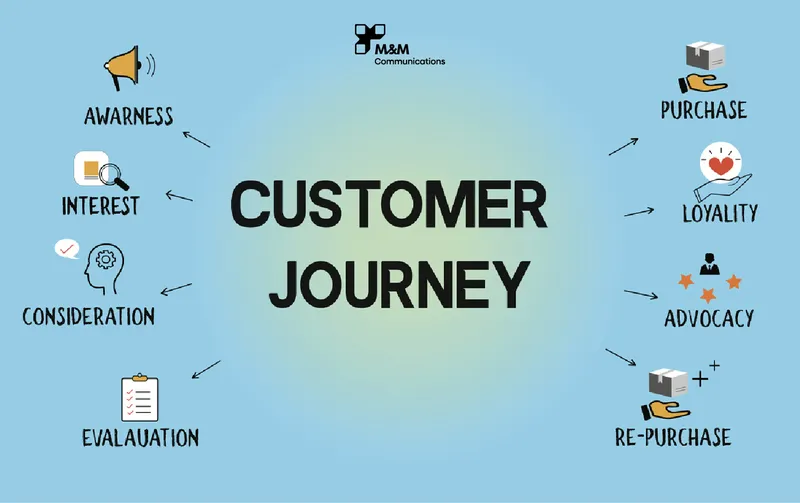
The Customer Journey is the process a consumer goes through from becoming aware of a brand to making a purchase, and beyond.
Typical stages include:
Awareness: The customer learns about the brand or product.
Consideration: They evaluate and compare available options.
Purchase: They make a buying decision.
Post-purchase: They experience the product and provide feedback.
Advocacy: They become loyal customers and share their experiences.
Understanding this journey helps businesses:
Deliver the right message at each stage.
Choose the most effective communication channels.
Create a seamless and memorable customer experience.
2. The Role of IMC in Optimizing the Customer Journey
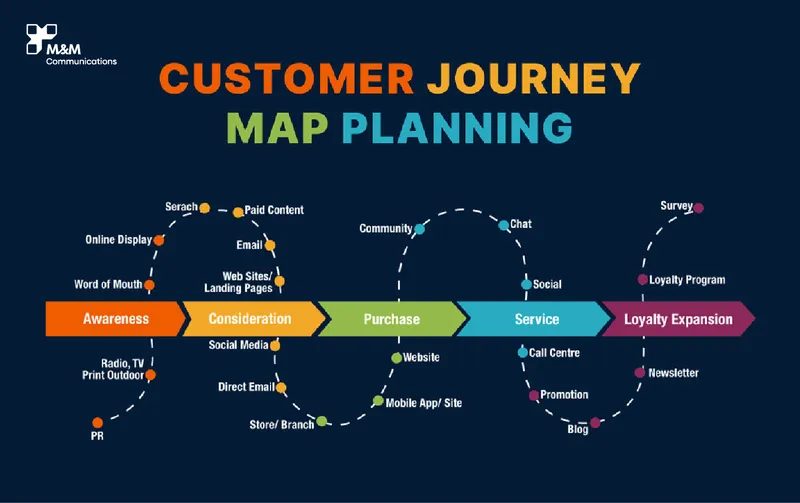
Integrated Marketing Communications (IMC) is a strategic approach that synchronizes all communication channels—from online to offline, paid to organic—to ensure a consistent brand message at every customer touchpoint.
How IMC supports each stage of the Customer Journey:
➤ Stage 1: Awareness – Reaching customers in the right places
Key Channels: Digital ads (Facebook, Google), PR, influencers, viral content.
IMC’s Role: Consistent brand visuals and messaging across TVCs, banners, and social content.
Goal: Make a strong first impression and build brand recall.
➤ Stage 2: Consideration – Providing the right information
Key Channels: Website, blogs, reviews, email, remarketing.
IMC’s Role: Deliver educational content, FAQs, explainer videos, KOL/KOC reviews.
Goal: Help customers understand why they should choose your brand.
➤ Stage 3: Purchase – Driving conversion
Key Channels: Landing pages, CTA buttons on social, limited-time offers, e-commerce.
IMC’s Role: Synchronize promotions across ads, SMS, and email reminders.
Goal: Push the customer toward a quick decision.
➤ Stage 4: Post-purchase – Keeping customers engaged
Key Channels: Thank-you emails, customer care, loyalty apps.
IMC’s Role: Share follow-up content, how-to guides, request feedback, loyalty programs.
Goal: Build satisfaction and repeat purchases.
➤ Stage 5: Advocacy – Turning customers into promoters
Key Channels: Social media, brand communities, hashtag campaigns.
IMC’s Role: Encourage reviews, user-generated content (UGC), affiliate and referral programs.
Goal: Transform customers into brand ambassadors.
>>> The Difference Between Marketing Plan and IMC Plan
3. How to align IMC with each stage of the journey?

To ensure IMC is truly customer-centric, businesses should:
Create a Customer Journey Map
Identify key touchpoints and match them with the most effective communication channels.
Tailor messages to each mindset
Example: In the awareness stage, focus on brand values. In the purchase stage, highlight product features and promotions.
Use data to personalize IMC (Data-driven IMC)
Track behaviors (clicks, searches, interactions) to personalize messaging and delivery timing.
Align Marketing, Sales, and Customer Service teams
Ensure a smooth customer journey and prevent drop-offs between stages.
4. Conclusion: IMC isn't about saying more—it's about saying the right thing at the right time
In today’s experience-driven market, IMC is pivotal in connecting brands with customers throughout their journey. Sending the wrong message at the wrong time can cause your brand to be ignored, while a timely, relevant message can spark immediate action.
At M&M Communications, we help brands go beyond traditional marketing and build integrated strategies that align with customer behavior. We ensure that every touchpoint has a purpose and that every message drives impact.
Ready to map out your customer journey and create a powerful IMC plan to connect with your audience? Let the M&M team guide you to success!
